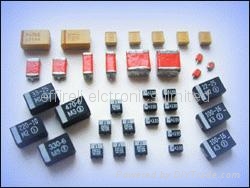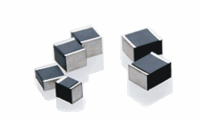There are a few types of SMD capacitors, ceramics chip capacitors, tantalum capacitors, electrolytic capacitors and film capacitors.
Ceramic capacitors are pretty easy to identify, they look like a brown block with metal ends - they look burnt if they are bad, generally and will pass most tests unless this is the case.
Tantalum capacitors vary in looks, but here is what they can usually look like;

, they usually look a-OK until they go pop and then they look like this;

Electrolytic capacitors look like little cans. The surface mount ones usually don't show any signs when they are bad, although they do get physically hot.
Film capacitors are pretty uncommon in surface mount devices, so you can fairly safely ignore them, but for identification purposes, they look something like this;

The ceramics/tants/films will all be pretty much perfect until they catastrophically fail, electrolytics slowly go up in ESR, getting hotter and hotter until either they pop or just become completely useless.